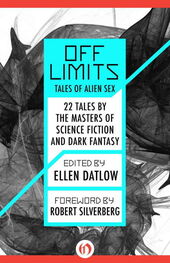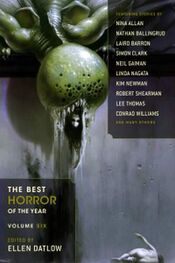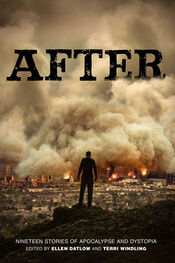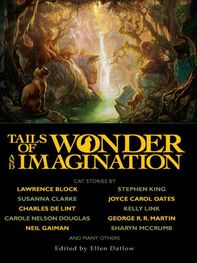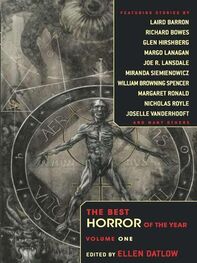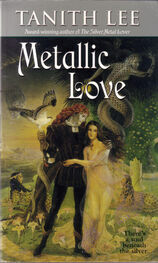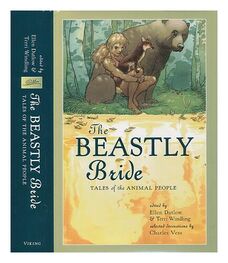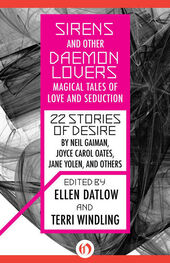Edited by Ellen Datlow and Terri Windling
This one is for Jennifer Brehl, with our heartfelt thanks.
“Why is your forehead so cool and damp?” she asks.
Her breasts are soft and dry as flour.
The hand that brushes my head is feverish.
At her touch I long for
the slap of water against rocks …
…
“What are you thinking of?” she whispers.
I am staring into the garden.
I am watching the moon
wind its trail of golden slime around the oak,
over the stone basin of the fountain.
How can I tell her
I am thinking that transformations are not forever?
SUSAN MITCHELL. From the
Journal of the Frog PrinceIntroduction
TERRI WINDLING AND ELLEN DATLOW
Once upon a time there were two girls who dearly loved fairy tales … and as they grew, they never lost their taste for magical, mythical stories. The girl with hair as black as night loved the dark and tragic tales best — the ones where birds weep tears of blood, the wicked dance in red-hot shoes, and poor little match girls die in the cold embrace of winter. She grew up to be an editor of horror fiction, and lived in a New York City apartment filled with cats and stones and polished bones and art by Edward Gorey. The girl with hair as light as day loved bright tales of transformation — where seal maidens dance on moonlit shores and stubborn girls weave coats of nettles for men turned into swans. She grew up to be an editor of fantasy fiction, and lived in a thatched-roof English cottage covered with roses red and white, like an Arthur Rackham painting come to life. Ten years ago these women discovered they shared a love of fairy tales — the old versions, sensual and dark, before modern children’s books and cartoons turned them simple and saccharine — as well as a love for adult literature based on fairy tale themes. They decided that the time had come to rescue fairy tales from the nursery and bring them back to adult readers — and so, along with artist Thomas Canty (whose beautiful painting graces this book), they created a six-volume library of stories inspired by classic tales. The first volume in the series was Snow White, Blood Red , published in 1993. It was followed by Black Thorn, White Rose; Ruby Slippers, Golden Tears; Black Swan, White Raven; and Silver Birch, Blood Moon . The final volume, Black Heart, Ivory Bones , you now hold in your hands.
In this series, some of the finest writers of mainstream, horror, fantasy, and children’s literature gather together to explore the many pathways, dark and bright, leading to enchantment. The diversity and range of their wonderful tales demonstrates our central premise: that classic folktale motifs still have much to offer fiction writers, and readers, today. Fairy tales speak in a deceptively simple, richly archetypal language; their symbols have proven to be as potent in the hands of modern fiction writers as they have been to generations of poets, playwrights, and storytellers in centuries past. The very words “once upon a time” evoke a shiver, a frisson of expectation. The oral and literary traditions meet in those words … and create sheer magic.
As we move between one century to the next, it is interesting to note that the current popularity of fairy tale literature echoes the fairy tale renaissance that occurred at the turn of the last century. In Europe the art nouveau movement covered buildings in Paris, Prague, and Vienna with nymphs, fairies and goddesses — and inspired magical design in ceramics, metalwork, jewelry-making and other crafts. Composers brought old folk music themes into new classical orchestral works, and “fairy” music for the classical harp became a popular trend. The Victorian genre of “fairy painting” contained adult and rather salacious imagery, as did the perverse fairy worlds drawn by Aubrey Beardsley and Harry Clarke. The mythic dreams of the Pre-Raphaelite painters and poets were enclosed in the briars of fairy tales, as were the bittersweet stories of Oscar Wilde and the poems of William Butler Yeats. In our own fin de siècle, adult fairy tale imagery has been most thoroughly explored in women’s literature and art. We find fairy tales on the “mainstream” shelves in the fiction of Angela Carter, Margaret Atwood, A.S. Byatt, Sara Maitland, Marina Warner, Berlie Doherty, Alice Thomas Ellis, Elis Ni Dhuibhne, and Emma Donaghue; as well as in the literary fantasy of Jane Yolen, Patricia A. McKillip, Tanith Lee, Robin McKinley, Delia Sherman, Sheri S. Tepper, and Lisa Goldstein; in the poetry of Anne Sexton, Sylvia Plath, Lisel Mueller, Olga Broumas, Sandra Gilbert, and Gwen Strauss; and in the visual arts of Paula Rego, Leonor Fini, Yvonne Gilbert, Becky Kravetz, and Wendy Froud. Many women today — as in seventeenth century France, where the term “fairy tale,” conte de fée , was coined — have discovered that the startling, even brutal imagery to be found in older versions of classic tales provides useful metaphors for the challenges we face in modern life. These tales come from an oral tradition passed on for hundreds, perhaps thousands, of years primarily by women storytellers — and their themes are as relevant today as they were in centuries past. Modern life is still full of wicked wolves, neglectful or even murderous parents, men under beastly spells, and beautiful women hiding treacherous hearts. We still encounter dangers on the dark and twisty paths leading through the soul, as well as fairy godmothers and animal guides to light the way.
In the pages that follow (as in the previous five books of this series) we welcome writers of both genders and from all areas of the literary arts to explore those paths and to see what new twists and turns they have to offer. We invite you to join us on this last excursion into the enchanted forest … laying a trail of bread crumbs and stones to bring us safely home, one last time.
—
Terri Windling, Devon, England —
Ellen Datlow, New York City
Tanith Lee lives with her husband John Kaiine by the sea in Great Britain and is a prolific writer of fantasy, science fiction, and horror. Her most recent books are Faces Under Water and Saint Fire, the first two of a quartet of novels set in a parallel Venice (Venus); Islands in the Sky, a children’s novel; and White As Snow, for Terri Windling’s series of fairy tale novels for adults.
Lee’s dark fairy tales have been collected in Red as Blood, or Tales From the Sister Grimmer— and have been included in Forests of the Night, Women as Demons, and Dreams of Dark and Light.
* * *
Not for the first time, a son knew himself to be older than his father.
Urlenn was thinking about this, their disparate maturities, as he rode down through the forests. It was May-Month, and the trees were drenched in fresh young green. If he had been coming from anywhere but a war, he might have felt instinctively alert, and anticipatory; happy, nearly. But killing others was not a favorite pastime. Also, the two slices he had got in return were still raw, probably inflamed. He was mostly disgusted.
It was the prospect of going home. The castle, despite its luxuries, did not appeal. For there would be his father (a king), the two elder sons, and all the noble cronies. They would sit Urlenn up past midnight, less to hear of his exploits than to go over their own or their ancestors’: the capture of a fabulous city, a hundred men dispatched by ten, the wonderful prophecy of some ancient crone, even, once, a dragon. There may have been dragons centuries ago, Urlenn judiciously concluded, but if so, they were thin on the ground by now. One more horror, besides, was there in the castle. His betrothed, the inescapable Princess Madzia. The king had chosen Madzia for Urlenn not for her fine blood, but because her grandmother had been (so they said) a fairy. Madzia had thick black hair to her waist, and threw thick black tempers.
Читать дальше
